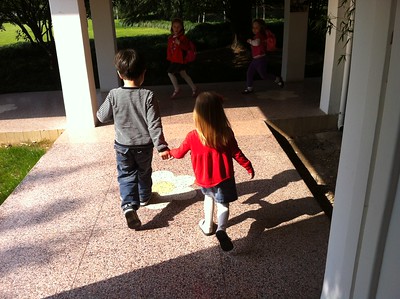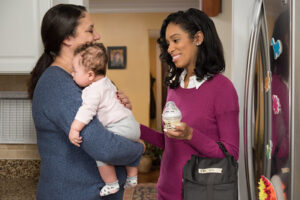The superintendent of Ann Arbor Public Schools announced last week that the district will not offer before- and after-school childcare for the 2021-22 school year. The move drew sharp criticism from parents in the district who depend upon the program.
According to AAPS Superintendent Jeanice Swift, the district cannot offer childcare safely amid the pandemic. Additionally, Swift noted that the program currently has a staff shortage. The district plans to redesign the childcare program to better address health and wellness concerns related to COVID-19. The announcement forced hundreds of families scramble to arrange for before- and after-school care just as many employers plan to return to in-office work starting next week. AAPS had licensed each elementary school’s before- and after-care program for about 100 students. The district did not report actual program usage figures.
No matter how or why it happens, losing childcare sucks. In 2020 alone, nearly 3 million women left the workforce because they couldn’t manage the competing demands of work and Zoom School for their children.
Three million women.
Left. The. Workforce.
Because. They. Had. No. Childcare.
Childcare is integral to success in the workforce, regardless of whether you’re a mother or a father. One parent can succeed in the workforce when the other provides care. Two parents can succeed in the workforce when they have third-party care. Unfortunately for most families, surviving on one paycheck isn’t an option. And single-parent families have no choice but to seek childcare from a provider.
Reliable, affordable childcare is also integral to the success of parents who are trying to earn degrees. Now, WCC student-parents need to compete with hundreds of AAPS families who are madly trying to secure care for their children.
Pandemic shows the importance of having childcare
So, what will students who can’t find affordable, accessible childcare do? They will probably do what three million women in 2020 did when they couldn’t balance the demands of work and childcare. They will make a choice, and since not taking care of your children isn’t a real option, I suspect they will leave school. WCC could answer this question by tracking the outcomes of those families who relied upon WCC to provide on-campus childcare.
As a community, we make an investment in every single student who enrolls in classes at WCC. Decisions like eliminating low-cost, on-campus childcare damage the investment we make in them. The Board should require the Administration to disclose outcomes for these families. Could parents who previously used the WCC Children’s Center find the drop-in daycare that WCC was willing to pay for? Did these parents finish their programs of study? Did they maintain their established rate of progress toward a degree? How many of them dropped out? Exactly what was the impact of this asinine decision on our communal investment in these students? How much did we lose?
The necessity of the Children’s Center cannot be determined by how much the program costs or how many families use it. Rather, WCC should measure its value by the number of people the Children’s Center enabled to complete their degrees. Or by how many children received competent, reliable, and safe care while their parents were in class.
Photo Credit: Scott and Elaine van der Chijs, via Flickr


























